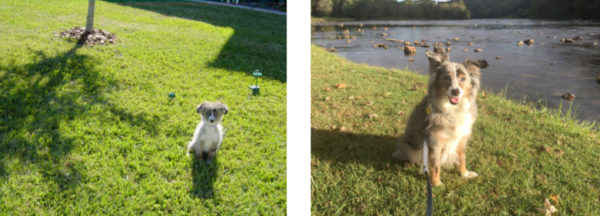Editor’s Note: Healthy Paws is a column sponsored and written by the owners of Clarendon Animal Care, a full-service, general practice veterinary clinic and winner of a 2017 Arlington Chamber of Commerce Best Business Award. The clinic is located 3000 10th Street N., Suite B. and can be reached at 703-997-9776.
A study conducted by the Association for Pet Obesity and Prevention found that 56% of dogs and 60% of cats in the United States were classified as overweight by their veterinarians in 2017.
Given that the average dog encountered at the park and the average cat seen peaking out through a window is more likely to be overweight than not, pet owners are developing a skewed perception of a healthy body weight.
Your dog or cat’s annual physical exam includes a standardized body condition score. Your veterinarian certainly isn’t trying to body shame your furry friend — we think they are just as cute with a few extra pounds and a set of love handles!
However, when you take into account all of the impacts obesity can have on your pet’s health, and the added cost to your pet’s health care as a result, those extra pounds are far from “cute.” If you are looking for the absolute best way to keep your dog or cat happy and healthy for as long as possible, the answer is to keep them lean.
Not only is a lean body weight what is best for your pet’s health, it is also what is best for your wallet — it is guaranteed to save you money on the cost of pet food and veterinary care in the long run.
The most effective way to get your pet to lose weight is to feed fewer calories. This means that you’ll buy fewer bags per year of that expensive pet food you’ve been budgeting for.
Also consider that obesity leads to diseases that decrease your pet’s quality of life and increase your cost of veterinary care. Arthritis, cruciate ligament rupture, intervertebral disk disease, respiratory disease, liver disease, diabetes and heat stroke are all more likely to occur in overweight patients.
All of these diseases can require pricey medications, surgeries and treatments to manage, and can cause a lot of stress for both you and your pet.
The consequences of obesity may sound daunting, but the good news is that your pet’s body condition is entirely within your control. Your dog or cat (hopefully) can’t open the pantry or fridge door themselves, and they rely on you to control their food intake.
Think twice before you share your snack with your pet — what is considered a “snack” for you could be more than their total daily caloric requirement.
A helpful comparison provided by Hill’s shows that one ounce of cheddar cheese for your 20 pound dog is the equivalent of the average woman eating one and half hamburgers. For a 10 pound cat, this would be the equivalent of a woman eating two and a half hamburgers.
The best way to have control over your pet’s body weight is to avoid table scraps altogether and stick to food and treats that have a known caloric content. The packaging of any reputable brand of food or treat will provide the number of kilocalories per cup of food or per treat, which makes it easier to stick to the caloric intake recommended by your veterinarian.
If you are the type of person who just can’t help but slip treats to your best bud when he is being extra adorable (which happens a lot), try measuring out a daily allotment and drawing from this pile throughout the day when you’re feeling inspired to do so. Using some self control will help keep your pets slim and trim, which will keep them happy, healthy and by your side for many more years to come.








